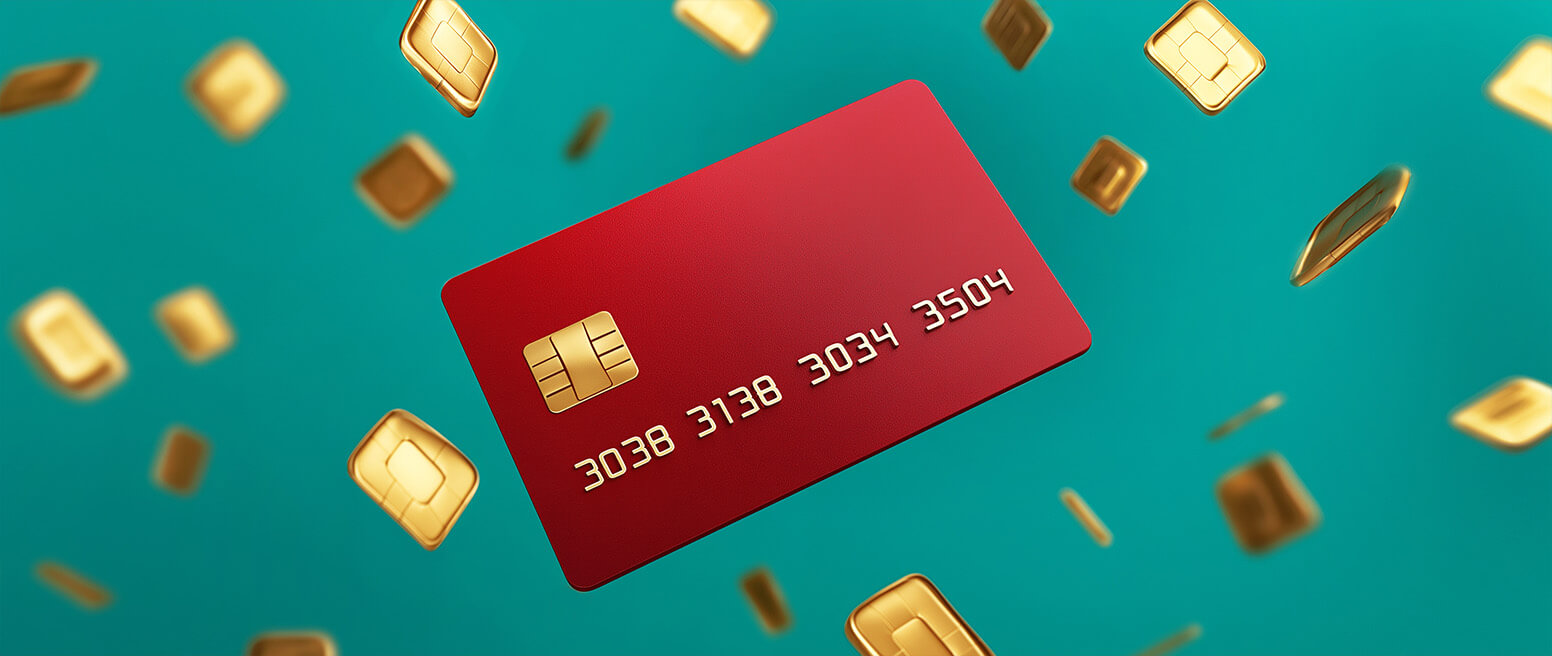Safeguarding Your Business: How to Design a Bulletproof eCommerce Payment System
eCommerce presents a lot of fantastic opportunities for modern businesses. Unfortunately, it also presents a lot of opportunities for cybercriminals.
Cybercrime has been on the rise for years, and its cost grows exponentially month by month. Current trends suggest that the cost of cybercrime will reach a shocking $23.82 trillion a year by 2027; a twenty-fold increase as compared to 2019.
It’s vital that your eCommerce store has the most secure payment system possible to protect both yourself and your customers from cybercrime. But how? Let us take you through the basics of what you need to do to ensure a secure eCommerce payment system.
Recommended reading
- What is EMV Bypass Cloning? Are Chip Cards Still Secure?
- Dispute Apple Pay Transaction: How Does The Process Work?
- Terminal ID Number (TID): What is it? What Does it Do?
- Point of Sale Systems: How to Get More From Your POS Machine
- What is EMV Technology? Definition, Uses, Examples, & More
- Visa Installments: How it Works, Benefits, & Implementation
Choosing a Secure Payment Gateway
A secure payment gateway (known as a “Secure Payment System” or “SPS”) is vital for keeping your customer details safe. A good provider will protect personal information, prevent unauthorized access, and encrypt data. All in all, your gateway should process payments in total security.
There are a lot of payment gateway options out there. Some of the most popular include:
- Stripe
- PayPal
- Authorize.net
- Amazon Pay
- WePay
However, these are far from the only options available. Don’t be afraid to shop around to find the service provider that works best for you, and be sure to prioritize security concerns when making your final choice. The right payment gateway can make all the difference to your ecommerce operation.
When choosing a payment gateway, security should be your main consideration. However, it’s not the only thing you should think about. Also look at things like:
- How familiar your customer base is with this payment gateway.
- How smooth the customer experience is.
- How quickly this payment gateway processes payments.
- Whether or not the payment gateway is compatible in all the territories you’re targeting.
- Whether or not the payment gateway is compatible with your software and systems.
Implement Security Measures & Encrypt Customer Data
Having a secure checkout and payment gateway is great, but it needs to be surrounded by a secure website. Otherwise, it’s all too easy for cybercriminals to steal data from unsecured elements of your site. These weak points could ultimately compromise your payment system.
One way to make sure that every element of your digital operation is secure is through an enterprise resource planning system. ERP software can help you to build and manage a security strategy throughout your entire digital operation, as well as making it easier to track and manage your security resources.
Encrypting customer data is another great way to keep your customer details safe. It’s highly recommended for ensuring compliance with regulations like the CCPA and the GDPR.
There are many different types of encryption and encryption solutions, but all work on the same rough principle: data is rendered unintelligible using encryption algorithms. It can only be restored to legibility through the use of a decryption key or code. Without the decryption code (which is kept very secure), the encoded data cannot be intercepted or used by cybercriminals.
Train Employees on Payment System Security
Human error is one of the most common factors in security breaches. Employees rarely have any malicious intent, but doing things like forgetting security checks and using weak passwords can leave your system wide open for exploitation.
Similarly, it is not uncommon for cybercriminals to actively target employees through phishing or social engineering attacks. They will use various tactics to try and trick employees into divulging sensitive information, such as passwords or access protocols.
It’s important that all employees have strong training in payment system security. They should also be fully aware of what to do to keep customer data safe and to both prevent and avoid cyberattacks.
Business email compromise, for example, is a common method by which employees can be tricked into facilitating a cyberattack. Ensure that employees know the signs to watch for, and are regularly updated on new and developing threats and fraud trends.
Use Strong Passwords & Two-Factor Authentication
Strong authentication isn’t just a good idea. It’s also a legal requirement in the EU, which introduced mandatory Strong Customer Authentication protocols in 2018. Under the SCA process, your customer must verify themselves using at least two of these three security layers:
Even if you are not in the EU, and are not planning to sell in the EU, these verification layers are still worth considering. Two factor authentication is not a long or complex process, and most customers will be happy to participate in order to keep their details safe.
SCA compliance does add some degree of friction to the transaction process. This may result in some buyers failing to complete purchases. One way around this issue is to deploy Transaction Risk Analysis, which can be carried out at the banking level.
Regularly Update Software & Systems
No digital system ages well. That said, security systems tend to age worse than most. It doesn’t take long for cybercriminals to find security workarounds, and for security systems to become obsolete.
For this reason, good security systems and software are comprehensively and frequently updated. It’s vital that you are always using the most up-to-date version of all your security software to stay protected.
It’s also important to keep other software and systems updated. Not only does this result in a smoother, more up-to-date customer experience, it can also help your security measures to work at an optimum level. Updated security systems work best with updated software and platforms.
Implement Fraud Detection & Prevention Measures
Cybercriminals use a variety of fraud tactics to gain access to passwords, payment gateways, bank accounts, and more. So fraud detection and prevention should be an essential aspect of your security strategy.
Training staff, as mentioned above, is one of the best things you can do to improve your fraud detection and prevention measures. Make sure that all staff know what to look for, what to avoid, and what to flag up to security teams.
Key fraud detection and prevention measures include:
- Safeguarding your security systems with the most up-to-date security measures possible
- Running background checks on every employee
- Using a secure-entry system both for your bricks-and-mortar premises and your online systems
- Insuring your business against cybercrime
Fraud detection is not an exact art, but getting fraud detection software can nonetheless be a powerful weapon in your security arsenal.
Fraud detection software monitors transactions and other online activity in real time, flagging any anomalies that may indicate fraud. It automatically blocks suspicious activity, protects identities, and keeps your team informed of any strange patterns in customer behavior.
Understand Payment Regulations & Requirements
A good understanding of payment regulations and requirements is essential for any eCommerce business. Depending on the legislation where you and your target customers are located, it is likely that you will have to comply with several regulations and requirements, many of which will be based around proving that you can be trusted to process payments online.
To prove that you are staying compliant with regulations and requirements, you will need to be meticulous with your accounting. Regulators and investors will be looking for evidence that you are treating customers’ funds and details fairly, safely, and legally. Similarly, you will need to prove your dedication to payment security through things like your accounting checklist for IPO if you want to scale your company through investment.
You must understand what authorities, regulators, and investors require. Then, in response, be meticulous about both following and accounting for these. If you can accomplish this, you will go a long way towards ensuring both the security of your site and the overall success of your business.
Secure an SSL Certificate
Finally, there’s the SSL certificate.
“SSL” stands for Secure Sockets Layer. SSL systems work through encrypted connection, and are very well trusted by customers and authorities alike. Thus, securing an SSL certificate shows that your payment system is secure and trustworthy.
To get an SSL certificate, you must first create a CSR (Certificate Signing Request). This creates a private and a public encryption key on your server. Then, you must send the CSR data file to the SSL issuer (you may find that this is referred to as a Certificate Authority or CA). The CSR data file contains the public key. The CA will then use your file to create a data structure matching your private key and send it to you.
Once you receive your SSL file from the CA, install it on your server. Instructions for doing this vary from server to server, but the ultimate goal is to connect your SSL to the CA’s root certificate.
The root certificate (and by extension, your own SSL certified system) has been digitally signed by a trusted security authority. So, by getting an SSL certificate, you verify that a trusted third party has authenticated your identity and your domain/site’s security measures. Web browsers automatically trust SSL certificates issued by reputable CAs, and will advise users that your site is safe.
Final Thoughts
Payment system security should be a priority for any ecommerce business. By following the recommendations in this article, you can keep your customer’s payment data and their money safe without ever compromising their customer experience in the process.













